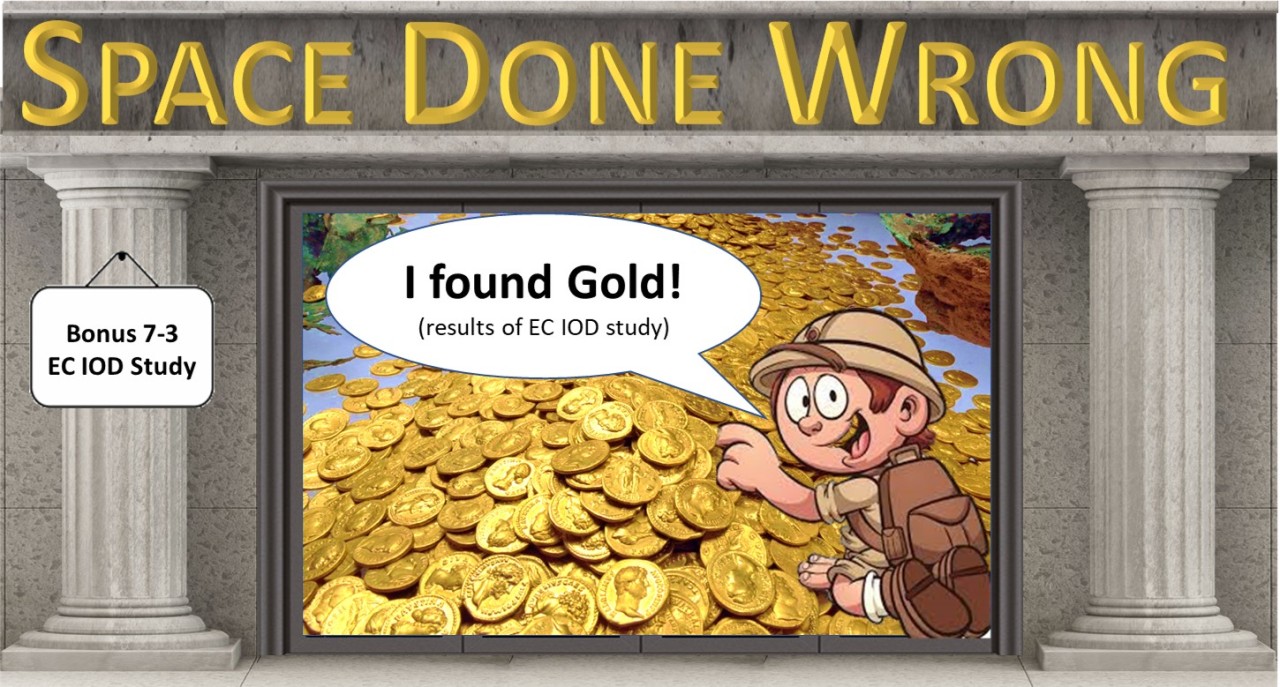If you ever were looking for an overview on European satellite carriers and their suitability for IOD/IOV missions here is one from an study conducted on behalf of the European commission. The study is from 2015 and contains an overview of European small satellites in the nano, micro and mini class… including their technical parameters AND prices!
What I find particularly interesting is that this study indeed suggests “to select a set of […] MicroSat missions” and that this would “provide a very good level of S/S resources […] at an affordable cost”. Regarding the bigger mini satellites they found: “Another potential approach is to try to fit a large number of smaller Payloads, but the complexity to make it run properly would not compensate the possible cost savings.” Looking at the numbers I am not sure about the cost savings but at least the stuff with the “herding the cats” was already found 5 years ago. The question remains why did ESA did “stick with what they know” even though they must have realized from this study that was a less than optimal solution.
But enough of the speculation, lets dive into this treasure 🙂
Data from the study:
As promised the study comes with a complete set of performance and cost data for all mentioned IOD carriers. For each group I have highlighted my observations of this data. Please note that the data is already 5 years old, so some things may have changed.
In the following section I will show an composite of the key data taken from the study and below each of the satellite classes I put my own observations.
Note: there is much more data in the study, so if you are looking for additional data on ADCS, power, or communication, please use the link to the study.
3U-6U Cubesats (3-10kg)

The 1MEUR cost for most of the 3U Cubesats (to my knowledge) includes the launch already. The difference in the cost between say Gomspace and ISIS could thus mean one quoted the bus alone and the other a complete mission. It is also noteworthy that the performance of 3U and 6U cubesats have drastically improved when it comes to ADCS and power. Satellites like ESA OPSSAT offer 3 axis fine ADCS with reaction wheels and star tracker, high data rate (50+ Mbit/s downlink) and deployable solar arrays with 50+W power. This however also comes at a cost meaning that these super high end 3U and 6U platforms easily can cost as much 20-30kg nano satellites. This means that due to the high fixed cost (an ADCS or power engineer cost the same regardless how big or how small the satellite is) the 1-3U cubesats actually fair rather poorly when it comes to specific IOD costs (cost/kg). This was already noted by the study 5 years ago and is one of the reasons why almost all commercial cubesat companies introduce larger platforms (starting with 6U or 12U).
Note: I am not sure what the orange color coding means. Also the value of cost / payload mass is calculated by me. The original study had cost / wet mass which is less useful.
Small micro or extended nano satellites (10-50kg)

Small micro satellites (or extended nano) are an overlap of large cubesats or small more traditional systems. In the last 5 years 12U and 16U systems have commonly been added by almost all vendors. The trend for larger platforms prevails. Companies like nano avionics already have announced 50kg platforms.
beyond 16U most cubesat manufacturers start to think outside the box.
While the study predicted in 2015 that the traditional small micro satellites will be overtaken by larger containerized payloads my observation is that beyond a certain platform size even traditional cubesat builders start to think outside the box.
Note: UniSat 6 (as all other Unisats) has a very interesting and low cost approach. Since it is done by a research organization I am not entirely sure there is not a cross financing by the corresponding institute and the performance parameter are lower than those of the peers but its a really interesting concept.
Traditional Micro Satellites (50-100kg)

As shown in my article on how to double costs by excessive QA/PA there seem to be two classes of traditional micro satellites. One group has a cost of around 100KEUR / kg IOD payload and the other is at around 200 KEUR /kg. I think I broadly understand why the TET satellites end up in the higher cost bracket but I am not sure what the reason is for the ones from SITAEL.
Note: The TET satellites from OHB/Astrofein gave the wet-mass as bus mass only whereas most of the others included the entire platform with payload. Therefore the TET-X is actually a mini satellites. I am a bit confused though why they name TET-1 with 91kg (including 40kg of payload). To my knowledge TET-1 has a mass of 115kg and a bus mass 70kg, which corresponds with the values given for TET-X. Maybe somebody confused the values of the predecessor DLR BIRD?
Note: In the last 5 years there were significant uprades in the payload performance of the BST satellites and so I took the liberty to update these values. Consequently the LEOS-100 is now also considered a mini satellite.
Mini Satellites

From what I can see here it seems to be obvious that most mini satellites are too complex to be used as IOD satellites. This complexity translates into very high specific IOD payload cost. It is interesting but not entirely unsurprising that satellites built in the ESA context are the most expensive ones (Proba, Cheops). This image would not drastically change if you would add the Luxspace Triton 2 (ESAIL) to the mix. To my knowledge this 110kg satellite had a mission budget of around 20MEUR. Considering that the Triton 2 platform is 75kg that would indicate 35kg payload capacity and a specific cost of >500kEUR.
On the other hand satellites in an export context (outside the ESA) even if done by traditional space power houses like Airbus (e.g. Astrobus-S, SSTL-300, SSTL-X50 in the microsat arena) can achieve very affordable specific costs.
Conclusions of the study
Here are some interesting conclusions by the authors of the study itself on how they see the different classes (cubesats, small micro, micro/mini) and their usefulness for IOD missions:
CubeSats:
“1U to 3U configurations seem to be poor candidates […] due to the limited platform resources they offer”
I agree, and that is the reason why we almost all Cubesat manufacturers go for larger platforms.
6U to 27U [configurations] are better […] as they overcome […] (resources availability) whilst they keep their advantages: (modularity, flexibility, standardization)
Small micro satellites (20-50kg)
bigger CubeSats (12 & 27U) will […] mature
both categories [small micro and bigger cubesats] will merge
The authors predict that small traditional micro satellites and larger cubesats will merge. I personally think that there is a good chance that beyond 16U traditional cubesat builders will start to think outside the box. At least it is my observation that beyond that point the containerization that is advantageous for 1-3U satellites will lose more and more of its appeal due to the large mass penalties and the restrictions that it brings.
Micro satellites (50-100kg)
For IODISPLAY […] [we propose] to select a set of […] MicroSat missions having a total mass ceiling of 50-60 kg.
[They] could provide a very good level of S/S resources […] at an affordable cost.
When I wrote my article I reasoned that the EC should have known better but I did not have a source to quote from. And here it is. Based on what you can find in the mini satellite section a few lines below and what is written here it is obvious to me that ESA (who for sure knew this study, too) against better judgement selected a single mini satellite to carry all IOD payloads instead putting it on multiple smaller platforms as suggested here.
Mini satellites (100-400kg)
I would have separated the classes differently. Two conclusions one for micro and one for mini would have been in order but lets have a look.
The main advantages of [micro/mini] platforms […] is […] heritage. […] this category is well populated, with a high number of solid developments, […] reliable and in fact already qualified platforms.
That is an interesting an convoluted way of saying that you don’t trust the smaller (and newer) platforms – yet.
the elevated mass of these platforms can also be a drawback: […] [as] the use of this range of satellites cannot be very cost-efficient […] or flexible [as single payload IOD carrier]
[it is possible] […] to house several payloads [on one large platform]
the complexity of development […] [would] probably not compensate the cost reduction, […] [when using] smaller […] platforms.
This is particularly true for longer end of this mass interval. Interestingly it also supports my criticism of ESA’s selection of P200 for the Element 01 IOD call.
Upperstages of rockets
Upperstages have been suggested for IOD several times but to my knowledge utilization remains low.
launcher upper stage for […] IOD / IOV […] [offers] easiness of integration and the decrease of costs, as no dedicated satellite has to be developed.
This is similar to the RUBIN platform developed by OHB.
The main weaknesses […] [are] limited resources, limited flexibility in the design of the mission […] [and] practical impossibility of […] fine attitude control).
Summary
I this document it during my research for the articles of IOD/IOV of this month #spacedonewrong episode. I think it is useful to see in the open that sometimes ESA takes decisions in a way that contradict the available data. It is also a treasure for everyone looking for data on European small satellite. The purpose of this article is also to to make a larger audience aware of it. In case the link to the study should not work in the future, please write me a message if you want a copy.
How can you help:
This text is part of a series of articles in which the author sets the framework to start a discussion about the wrongs of the space industry. If you have experienced similar things, leave a comment. Other views and opinions are very welcome, too, as they may present a way forward. Please be kind to each other.
Disclaimer
The author’s views are his own do not represent the views of Berlin Space Technologies.


Leave a Reply